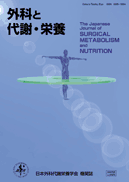Volume 50, Issue 1
Displaying 1-19 of 19 articles from this issue
- |<
- <
- 1
- >
- >|
-
2016 Volume 50 Issue 1 Pages 1001-
Published: 2016
Released on J-STAGE: April 05, 2016
Download PDF (1308K)
-
2016 Volume 50 Issue 1 Pages 1002-
Published: 2016
Released on J-STAGE: April 05, 2016
Download PDF (1084K)
-
2016 Volume 50 Issue 1 Pages 1003-
Published: 2016
Released on J-STAGE: April 05, 2016
Download PDF (1084K)
-
2016 Volume 50 Issue 1 Pages 1004-
Published: 2016
Released on J-STAGE: April 05, 2016
Download PDF (464K)
-
2016 Volume 50 Issue 1 Pages 1-6
Published: 2016
Released on J-STAGE: April 05, 2016
Download PDF (1421K) -
2016 Volume 50 Issue 1 Pages 7-11
Published: 2016
Released on J-STAGE: April 05, 2016
Download PDF (1350K) -
2016 Volume 50 Issue 1 Pages 13-20
Published: 2016
Released on J-STAGE: April 05, 2016
Download PDF (1415K) -
2016 Volume 50 Issue 1 Pages 21-28
Published: 2016
Released on J-STAGE: April 05, 2016
Download PDF (2098K) -
2016 Volume 50 Issue 1 Pages 29-34
Published: 2016
Released on J-STAGE: April 05, 2016
Download PDF (1354K) -
2016 Volume 50 Issue 1 Pages 35-41
Published: 2016
Released on J-STAGE: April 05, 2016
Download PDF (1625K) -
2016 Volume 50 Issue 1 Pages 43-49
Published: 2016
Released on J-STAGE: April 05, 2016
Download PDF (1939K)
-
2016 Volume 50 Issue 1 Pages 51-62
Published: 2016
Released on J-STAGE: April 05, 2016
Download PDF (1544K)
-
2016 Volume 50 Issue 1 Pages 63-69
Published: 2016
Released on J-STAGE: April 05, 2016
Download PDF (1536K)
-
2016 Volume 50 Issue 1 Pages 71-76
Published: 2016
Released on J-STAGE: April 05, 2016
Download PDF (1352K)
-
2016 Volume 50 Issue 1 Pages 77-
Published: 2016
Released on J-STAGE: April 05, 2016
Download PDF (1347K)
-
2016 Volume 50 Issue 1 Pages 3001-
Published: 2016
Released on J-STAGE: April 05, 2016
Download PDF (677K) -
2016 Volume 50 Issue 1 Pages 3002-
Published: 2016
Released on J-STAGE: April 05, 2016
Download PDF (536K) -
2016 Volume 50 Issue 1 Pages 3003-
Published: 2016
Released on J-STAGE: April 05, 2016
Download PDF (1233K) -
2016 Volume 50 Issue 1 Pages 3004-
Published: 2016
Released on J-STAGE: April 05, 2016
Download PDF (642K)
- |<
- <
- 1
- >
- >|
